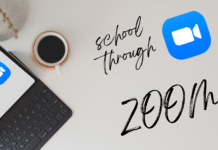
If you’re from ages 18-24, there’s a 78% chance you used Snapchat in 2018. When a young person first meets someone for the first time, most people generally ask for the other person’s Snapchat and not their phone number. The way we communicate went from talking through text, to talking through pictures. Some people find Snapchat to be “less personal” than asking for a phone number, despite exchanging photos.
Has Snapchat changed us? Some people obsess daily about sending out their “Snap streaks:” a snap streak is how many days in a row you snap chat someone. A little number and an emoji pops up next to their name to show how many days in a row you have “kept the streak”. It might sound crazy, but people break up and fight over whether or not they lost their streak or if their partner has a streak with someone else. Users also have something called a Snapchat score and that is the number of snaps you have sent/received. Some people easily have over 1,000,000 as their score which means they have sent at least 500,000 snaps and received 500,00 snaps.

Snapchat is not only used for Pictures, it also has a texting feature. A lot of people use it to text instead of just using their messages app. Some users often use a feature on Snapchat called “memories”. This feature lets you save your videos or pictures by the date where you were and what time it was. It’s a little scary how much Snapchat has taken over because people will blog their whole day in their “memories” and not even realize.
Snapchat is also keeps information on the location of the users as well. There is a feature called “snap map” and it shows exactly where you are on the map of the world to whoever you have as a friend on Snapchat. Say you have a stalker who always wants to see where you are, they can simply request you on Snapchat and if you add them they’ll be able to find you whenever they want.
We have gone from permanently recording daily life/information in books and online websites/social media to posting 10 second photos that “disappear” after 24 hours. It has been an evolution that has continued to produce more and more content for the online world. The convenience of Snapchat and its ability to reach a large audience so quickly has allowed for an abundance of video and photo to be produced at an astronomical rate. Snapchat has not only changed the way social media functions but also communication in general.
Snapchat has changed us in all sorts of ways. For a lot of people it is the first thing they check when they wake up and for others it is the only way they know how to socially communicate with people. Despite using social media before the rise of Snapchat, with the emergence of the app, the younger generation has become accustomed to instant communication. Where Instragram, Twitter, and Facebook normally take a bit longer to write out a caption, Snapchats are fired off in less than a second. This type of instant communication is changing us in a way we view the world and our expectations; we anticipate immediate gratification and immediate responses. In the future, how will this affect the way we communicate? Will people stop talking face to face altogether because it takes too long?








